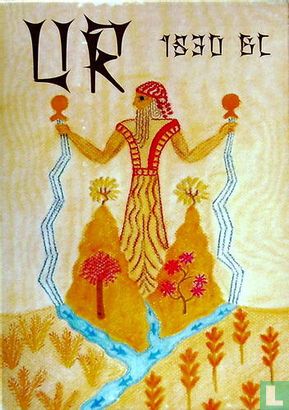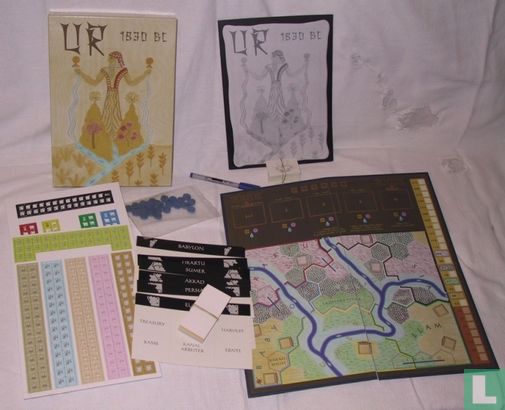



Catalogue information
Ur, 1830 BC (Ur, 1830 BC) is a game about irrigation in Mesopotamia. It is based freely on Francis Tresham's successful series of 18XX train games, of which 1830 and 1835 are the best known. Ur has many dimensions: it is a game about water networks and strategic planning; it is a game about speculation with land and knowing when it is time to move to greener pastures; it is a game about the management of large estates; it is a game in which you try to outsmart your opponents by getting that last drop of water from his land on yours. The game feels like an 1830 variant, but it plays very differently, especially on the board. Each player rules a dynasty in ancient Mesopotamia. The game is played in rounds, each of which consists of three phases. In the colonization phase, players buy and sell land in order to get hold of those lands that yield the most. When the population in an area grows large enough, states are created. These states can build irrigation works in the development phase. The third phase is the rainy season: water flows through the river and irrigates the land via canals. Every piece of land that is irrigated provides income for the landowner and for the state that owns the irrigation works. As more and more states are founded, technological advancements in waterworks and excavation equipment render the old tools useless. Canals are being dug faster and faster, yields are increasing and more and more land can be cultivated. You have to plan in Ur on three levels: firstly you have to buy and sell smartly in the land market, secondly, it is about tactically developing the right lands and channels, and thirdly, you have to anticipate the speed of technological progress influence strategically. The game equipment consists of a game board, wooden discs representing the water, a number of colored tokens indicating land ownership and waterworks, a stack of cards and a set of Splotter banknotes.
This text has been translated automatically from Dutch
Click here for the original text



